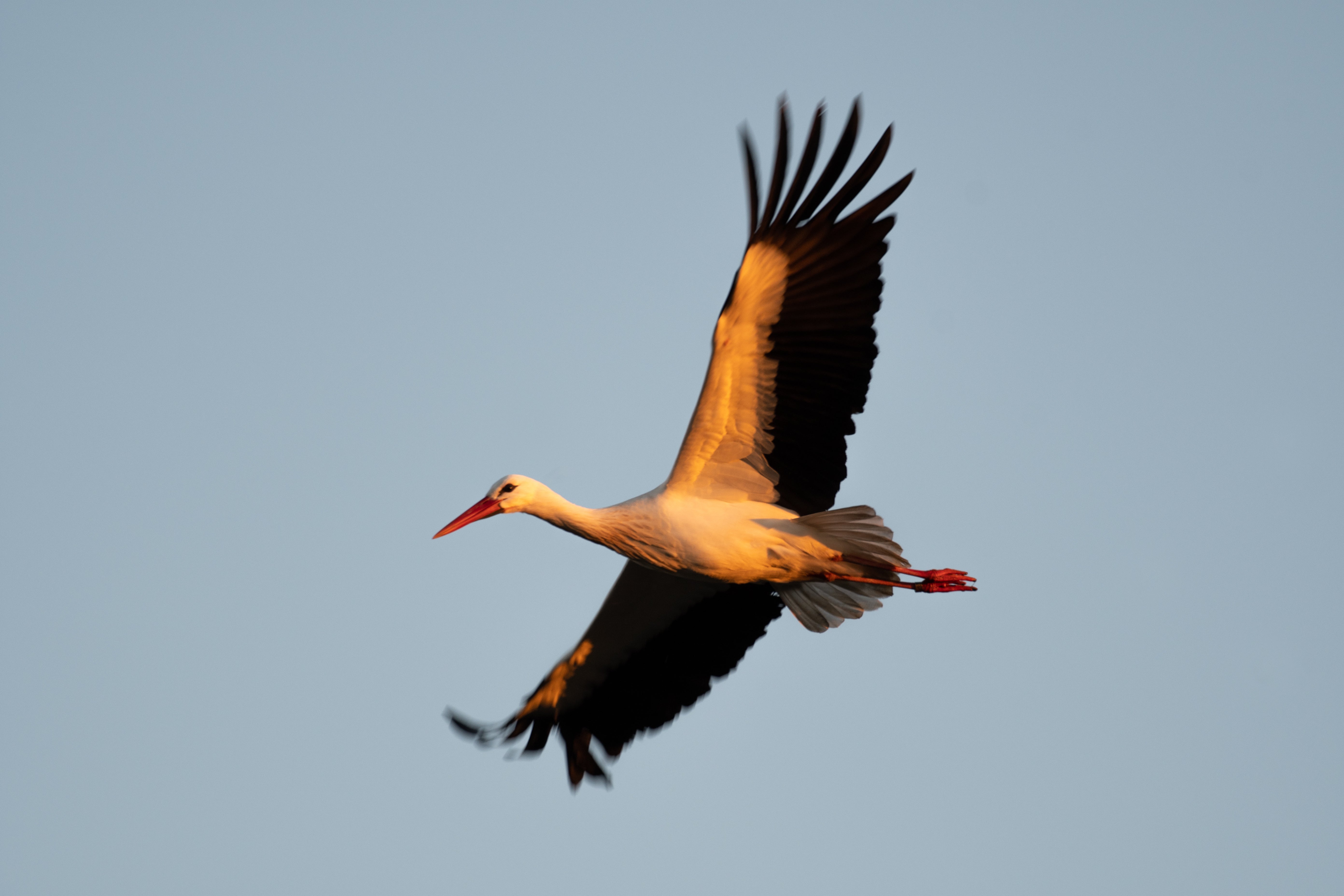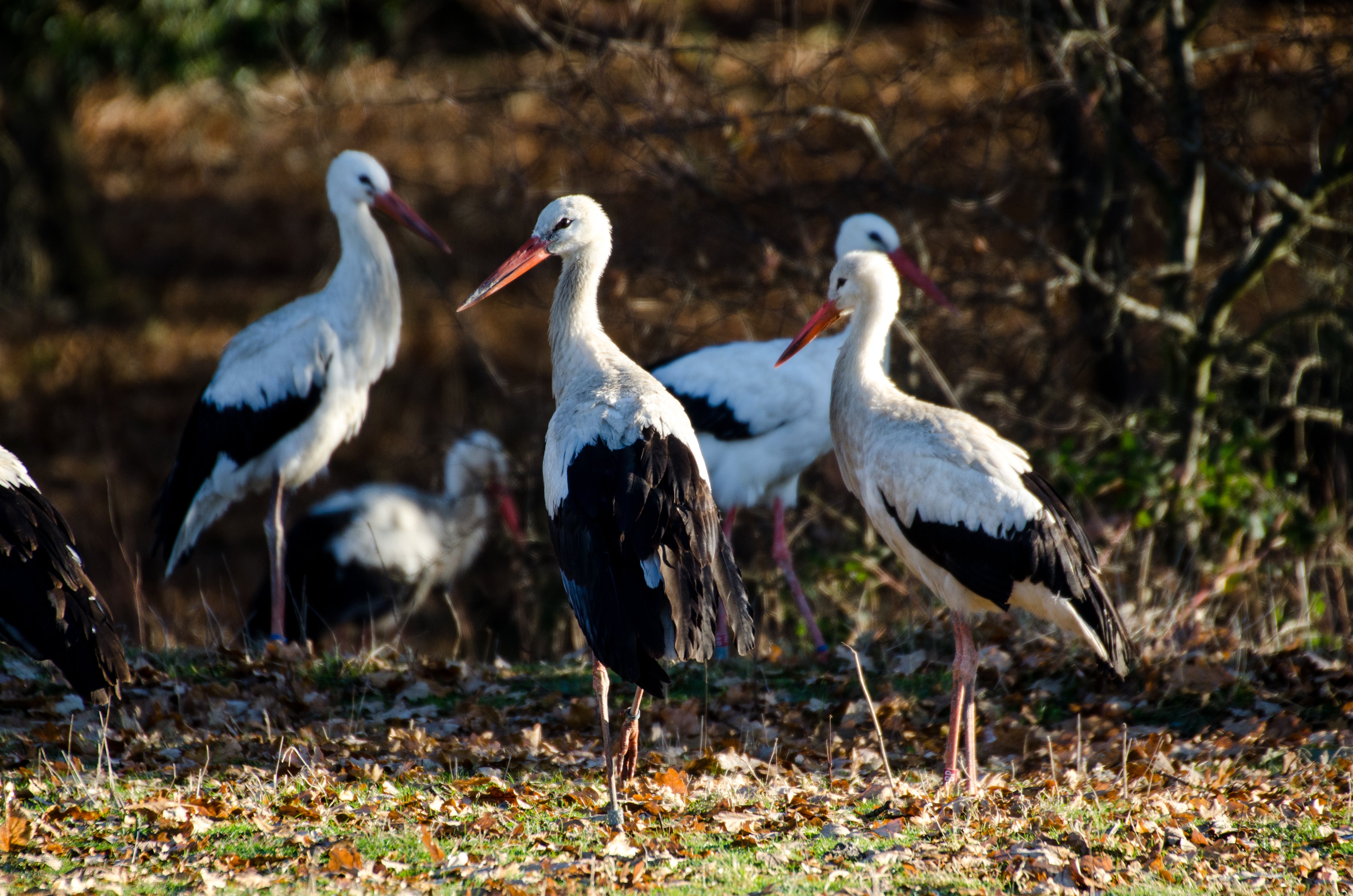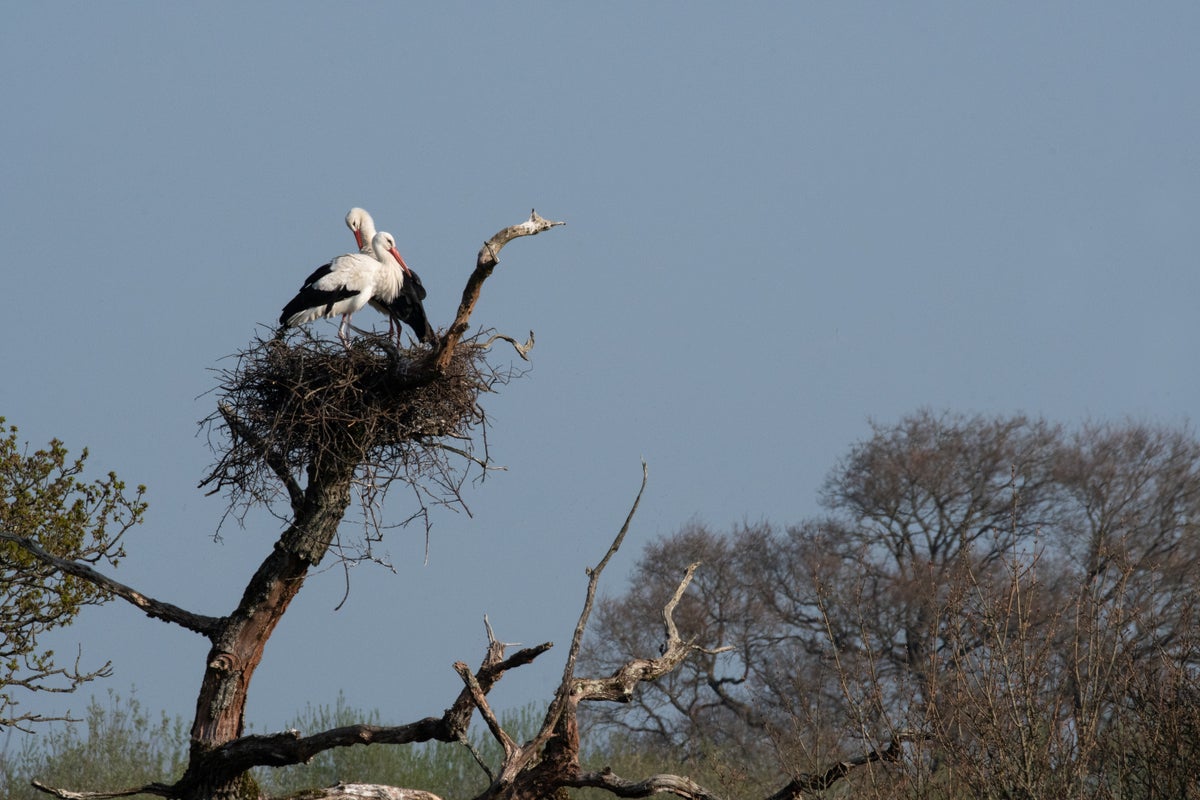Conservationists have hailed the white stork as “an emblem for nature recovery” as they work to reintroduce the long-vanished breeding bird to the UK.
Once a common sight in Britain, with their large nests adorning rooftops, buildings, and trees, the birds disappeared centuries ago due to hunting and habitat loss. While migratory storks still visit from the continent, conservationists say that the lack of existing colonies prevents them from settling to breed.
Since 2016, a reintroduction project in southern England has been underway, aiming to establish new colonies using rehabilitated injured storks. These colonies are intended to act as a “magnet,” attracting other wild birds to settle and breed.
The scheme has enabled a wild population of breeding storks re-establish itself for the first time in centuries and delivered unexpected benefits for other birds and wildlife, conservationists say.
The white stork project uses rescued non-flying birds from Warsaw Zoo, Poland, some of which are kept at Cotswold Wildlife Park where they breed, with their young released from Knepp Estate, in West Sussex and Wadhurst Park in East Sussex, to encourage them to come back there to nest.
Other Polish birds, some of which have injuries that mean they can fly short distances but not migrate, live in or around pens on the estates, breeding and establishing the founding colonies that will attract other storks.

At Knepp, the storks are in a landscape that has been “rewilded” since 2000, with former agricultural land turned over to natural processes using animals including longhorn cattle, red and fallow deer and pigs, whose grazing and foraging help create a mosaic of scrub, disturbed ground and grassland.
There are also areas of woodland, the river has been restored to a more natural state and in just a few years, beavers in an enclosure have turned a small stream into wetlands rich in dragonflies, damselflies and other insects.
Walking through the scrub and grassland punctuated by large trees, it is hard to miss the metre-tall storks soaring through the skies or stalking through the grass, while the distinctive bill “clattering” they make echoes through the landscape.
White stork project officer Laura Vaughan-Hirsch said they “love it” at Knepp, where the rewilding process has created healthy soils and habitat and an abundance and diversity of insect life.
While they are primarily wetland birds, “they love mixed habitats, grasslands, woodlands and lovely big trees to nest in, anything that’s insect-rich, worm-rich, that’s their thing”, she said.
The first chicks were born to birds nesting in the trees in 2020, and non-flying storks produced their first young in ground nests in the fox-proof enclosure in 2023.
This year Ms Vaughan-Hirsch said at least six birds born at Knepp have returned after an annual migration to Africa to nest in the colony, including one who has set up home in the same tree as her parents, and has been stealing nesting material from them.
The team are expecting around 40 fledglings in 2025, including youngsters from the ground-nesting storks which are hand-fed pieces of fish to supplement food their parents can source in the pen.
The storks’ success at Knepp shows that “sort the habitat out, the soils, insects, healthy water systems, and then your storks will come eventually,” she said.
“We all see the white stork as a big charismatic species but what it really is, is an emblem for nature recovery,” she said.
With each chick needing 35kg of food, such as crickets or worms, between hatching and fledging, their survival in the landscape is an indicator of how healthy the ecosystem is.
And in turn the storks’ nests – which can weigh up to a tonne – in trees or even on roofs attract an array of insects, while wrens, collared doves, house sparrows and, this year for the first time, blue tits have been seen nesting in the vast structures.
Isabella Tree, who owns Knepp with her husband Charlie Burrell, said their impact on other species was an “unexpected outcome” of the reintroduction.
“What are we are seeing is that even species that don’t have a reputation as being keystone species have an effect on ecosystems.
“They are doing extraordinary things that we had never really known about.”
And she said: “We think we know what impact a species will have on the landscape, but how can we when our landscape is so fragmented and so depleted. The only way to find out is to try it.”

It is ever more important as climate change pushes species to find new habitat to boost populations of even birds with naturally big ranges, she suggests.
She said the scheme had naysayers in the beginning – including conservationists who did not think it should be attempted or would work.
But she said: “The absolute joy and excitement is that they are now flying to Morocco on migration and coming back and nesting and having chicks and interacting with wild birds and bringing wild birds back with them as pairs.”
And the storks are a “totem” for wider river catchment restoration and a way of connecting people with nature, she said.
“We have such a long relationship with these birds, from thousands of years ago, from Egyptians, and ancient Greeks and ancient Islam these birds have been cherished, and they’re somehow in our DNA.
“We recognise ourselves in them, they kind of walk like us, they look like brigadiers on a parade ground when they’re walking across the fields, and when they’re flying they look like pterodactyls,” she said.
Further projects to reintroduce storks are under way in Cornwall and Devon.
And at Knepp it is hoped the birds will spread out from the estate and start nesting away from the current colony, raising the possibility that, in some areas at least, they will become a familiar sight in the skies, trees and on rooftops again.


